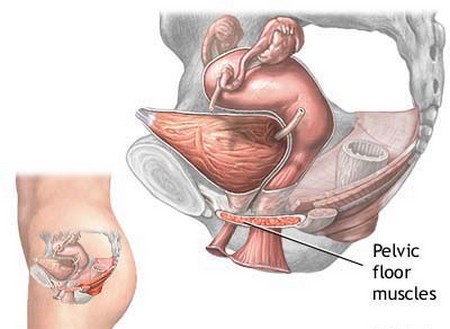Stress incontinence may affect more than 10 million Americans, most of them women over 50, but their doctors will never know. People seem to think incontinence is a natural part of aging. Couple that with the humiliation they feel over “leaking,” and you have what many experts call the “silent epidemic.”
Your body changes a great deal as you age, but that alone will not lead to stress urinary incontinence (SUI). You’re more likely to develop SUI from certain drugs, diseases, and conditions. Even if you find it embarrassing, you must discuss your symptoms with your doctor, so she can properly diagnosis your problem. In the meantime, here are some things you can do to regain control over this part of your life.

- Check your menu. Many foods and drinks affect your ability to hold urine. Watch your intake of coffee, tea, carbonated drinks, citrus fruits, tomatoes, chocolate, sugar, honey, spicy foods, and milk products. Perhaps one or more of these are adding to the problem.
- Keep drinking. Don’t try to control your incontinence by drinking less. It is still important to keep your body well-hydrated. Experts recommend six to eight glasses of water each day.
- Take care of your skin. If your incontinence continues, the skin in that area may become irritated and possibly infected. Keep your skin clean and dry, using mild soap, warm water, and soft towels. Ask your pharmacist about an appropriate cream or ointment to protect your skin as well.
The long-range plan for stress incontinence
You can wear an absorbent product to give you some peace of mind and let you participate in activities you enjoy. But you can also take a more active part in controlling your incontinence. It may take some time and effort, and you may have to change your lifestyle somewhat, but it also could help you avoid surgery. Discuss all options with your doctor, but try these self-help tips first.
- Train your bladder. By going to the bathroom on a strict schedule, you teach your bladder to hold more urine, and avoid waiting too long to visit the bathroom. You should keep a chart or diary, and begin by going to the toilet every 30 minutes. Gradually increase the time to every two to three hours.
- Work out. Kegel exercises are a great way to strengthen the muscles that control your urine flow. Sit comfortably with your legs uncrossed and your abdominal, thigh, and buttocks muscles relaxed. Then pretend you are trying to stop urinating. The muscles that you tighten are called pubococcygeus muscles. Keep them tense for about 10 seconds, then relax. Repeat this tensing and relaxing 10 times, three times a day. Be patient. You may not see improvement for at least six to eight weeks, and you may have to make the exercises part of your daily routine. If you want to check to be sure you are doing them right, you can buy something called vaginal cones. Insert one of the weighted plastic cones into your vagina, and tighten the muscles to hold the cone in place. If you are doing the Kegels correctly, the cone will not fall out. Remember to tighten these muscles before you cough, sneeze, or lift a heavy object to help control any leaking. Soon, you may not even have to think about it.
- Buy into biofeedback. A professional can train you in this technique to help you become more aware of how your body works. This will help you gain more control over your bladder.
- Stay active. Keep as regular an exercise program as possible. This will not only contribute to your overall health, but will keep your bowel movements regular. Constipation can affect incontinence.
- Stop smoking. Tobacco smoke affects your bladder and urethra. So do conditions associated with cigarettes, such as asthma and circulatory diseases. And that hacking smoker’s cough places a lot of stress on your bladder, which can lead to leakage. It’s never too late to quit. Ask your doctor for help.